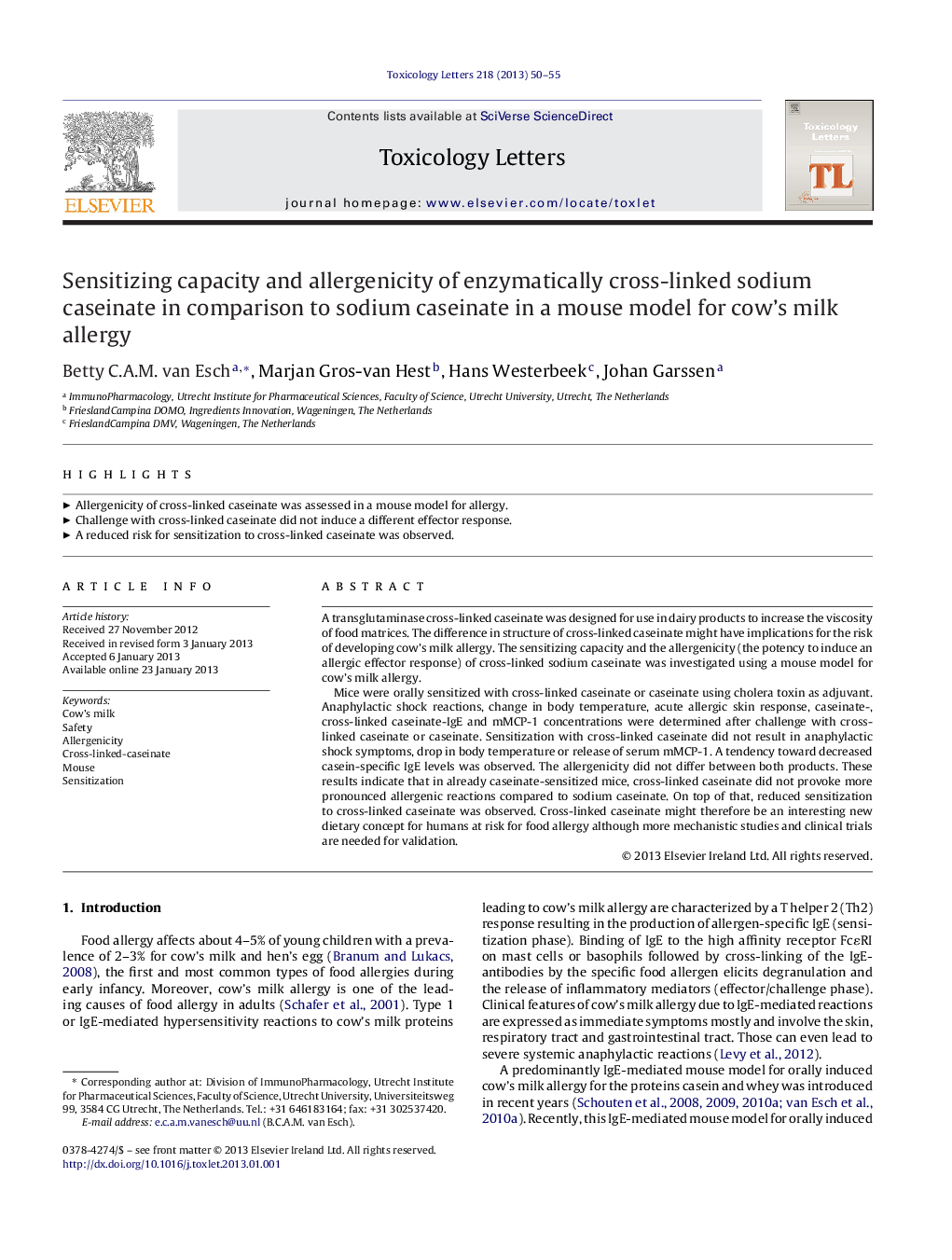| Article ID | Journal | Published Year | Pages | File Type |
|---|---|---|---|---|
| 2599376 | Toxicology Letters | 2013 | 6 Pages |
A transglutaminase cross-linked caseinate was designed for use in dairy products to increase the viscosity of food matrices. The difference in structure of cross-linked caseinate might have implications for the risk of developing cow's milk allergy. The sensitizing capacity and the allergenicity (the potency to induce an allergic effector response) of cross-linked sodium caseinate was investigated using a mouse model for cow's milk allergy.Mice were orally sensitized with cross-linked caseinate or caseinate using cholera toxin as adjuvant. Anaphylactic shock reactions, change in body temperature, acute allergic skin response, caseinate-, cross-linked caseinate-IgE and mMCP-1 concentrations were determined after challenge with cross-linked caseinate or caseinate. Sensitization with cross-linked caseinate did not result in anaphylactic shock symptoms, drop in body temperature or release of serum mMCP-1. A tendency toward decreased casein-specific IgE levels was observed. The allergenicity did not differ between both products. These results indicate that in already caseinate-sensitized mice, cross-linked caseinate did not provoke more pronounced allergenic reactions compared to sodium caseinate. On top of that, reduced sensitization to cross-linked caseinate was observed. Cross-linked caseinate might therefore be an interesting new dietary concept for humans at risk for food allergy although more mechanistic studies and clinical trials are needed for validation.
► Allergenicity of cross-linked caseinate was assessed in a mouse model for allergy. ► Challenge with cross-linked caseinate did not induce a different effector response. ► A reduced risk for sensitization to cross-linked caseinate was observed.
